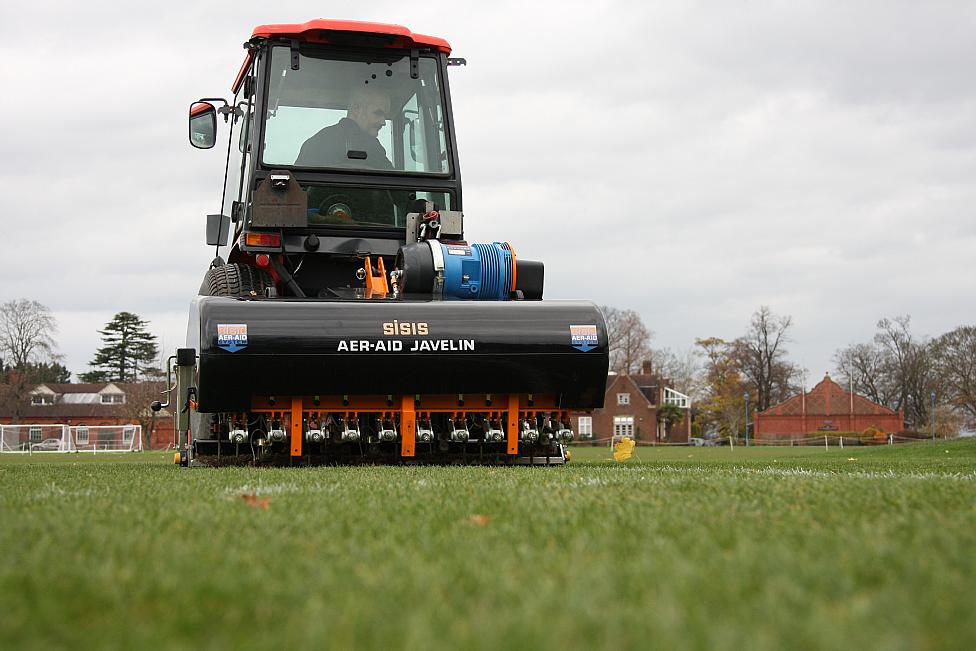Solid tine aeration is used to improve soil structure, reduce compaction, release nutrients, allows water to penetrate the surface and enhance overall turf health. Unlike hollow tine aeration, which removes soil cores, solid tine aeration simply punctures the soil with solid metal spikes or tines. This method creates channels that allow for better air, water, and nutrient penetration.

When to Use Solid Tine Aeration
Solid tine aeration is particularly useful in addressing compaction with minimal soil disruption. You might go for this method over hollow tine aeration for areas with high foot traffic—it’s ideal for maintaining playability on sports surfaces or aesthetic appeal on fine turf areas. It’s also a good choice for when compaction is less severe.
Frequency of Solid Tine Aeration
The frequency of solid tine aeration depends on your soil type, turfgrass species, and usage patterns. Ideally, you should aerate using this method at least once or twice a year for areas prone to compaction. But if you’re dealing with heavy clay soils or areas with intense use, more frequent aeration may be necessary.
Best Timing for Solid Tine Aeration
The best time to perform solid tine aeration is during active turf growth, typically in spring or autumn. This enables quicker recovery and less stress on the grass.

